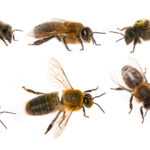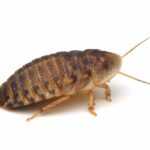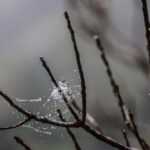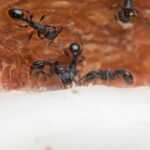Yellow Sac Spider Bite: Identification, Symptoms, and Treatment
- Yellow sac spiders display pale yellow or light tan body colors combined with orange-brown stripe markings on their abdomen and extended thin legs. These features distinguish them from similar species.
- Human exposure to yellow sac spider bites should be recognized because these spiders can bite people even without initial provocation.
- Yellow sac spider bites result in minor to moderate symptoms that include pain along with redness and swelling. Necrotic lesions may develop occasionally, so monitoring is essential for complication detection.
- People can prevent yellow sac spider bites by maintaining clean indoor environments. Structural sealing and outdoor maintenance practices discourage spiders from settling and feeding.
Introduction to the Yellow Sac Spider
The yellow sac spider belongs to the Cheiracanthium genus. These spiders exist throughout North and South America as well as Europe, Africa, and Asia. The sac spiders have pale yellow or light yellow bodies. This coloring allows people to identify them in natural and human-made surroundings. Yellow sac spiders live in homes and buildings as well as gardens. They navigate walls and ceilings and hide in corners. These spiders use their bites to cause human pain. Yet, they serve an important role by controlling insect populations in the ecosystem. Yellow sac spiders are non-aggressive. They reserve biting for defensive situations. Their ability to thrive in diverse settings—from rural agricultural areas to urban apartment buildings—demonstrates their adaptability. They provide essential insect population control.
Identifying Yellow Sac Spiders
Understanding yellow sac spider identification helps prevent bites. The brown recluse spider is often mistaken for yellow sac spiders because of their similar size and coloring. The brown recluse belongs to a different family. It does not have the fiddle-like pattern that differentiates it from sac spiders. Knowing about these spiders enables people to predict their movements and protect themselves from bites.
Yellow sac spiders establish habitats in various natural settings. These include gardens, leaf litter, stones, and window sills. Inside buildings, they prefer to hide under window sills and in corners. Outdoors, they hide under stones, in leaf piles, and garden debris. Yellow sac spiders construct egg sacs in concealed spots such as leaf litter, window sills, and under stones. Female yellow sac spiders protect their multiple egg masses. They deposit eggs in silk sacs, guard them closely until hatching, and ensure the safety of developing spiderlings. After hatching, young spiderlings remain in the silken retreat for a period. They gradually venture out at night to hunt as they develop.
Physical Characteristics
The pale yellow or light tan spiders have a smooth texture and a distinctive orange-brown stripe on their abdomen. These characteristics distinguish them from other species.
Adult yellow sac spiders range from 0.15 to 0.31 inches long. Their body proportions include extended thin legs. These spiders inhabit outdoor areas like foliage and trees. They also live in human-made structures during winter months when they seek indoor warmth.
Habitat Preferences
Yellow sac spiders prefer warm and humid environments. This preference leads them to settle in gardens and leaf piles, where they tend to hide in organic matter and vegetation. Often, they occupy dark spaces both inside and outside buildings and thrive in regions with temperate and tropical climates.
Indoors, the spiders prefer human-made structures, especially wall and ceiling corners. During winter, they move inside buildings to find warmth and food. They hide behind furniture and in dark corners. Yellow sac spiders are adaptable residents. They are the most common Pennsylvania spiders in urban areas, agricultural fields, and natural forests. As commonly encountered Pennsylvania spiders, they are significant for their prevalence and role in ecosystems. Pennsylvania spiders are found in various environments. Man-made structures such as basements, attics, and storage areas are favored indoor habitats.
Diet and Behavior of Yellow Sac Spiders
Yellow sac spiders eat various prey, primarily small insects, other spiders, and occasionally nectar. This reflects their carnivorous and opportunistic diet. They are active predators. They rely on fast movements instead of web construction to hunt. Their diet includes small insects such as garden pests like aphids, beetles, and flies. They also eat other spiders and non-insect arthropods. Yellow sac spiders serve as natural pest controllers for gardens and outdoor areas. They help manage pest populations. During the day, they hide in small silk sacs or retreats. At night, they become active hunters. Their opportunistic eating habits allow them to consume any available food, including nectar and other sweet substances when insects are scarce. This adaptability helps them serve as effective predators and assists in pest control.
Understanding Yellow Sac Spider Bites
Bites from yellow sac spiders create various symptoms, ranging from light discomfort to serious reactions. These bites cause localized pain, redness, and swelling at the bite location. Although yellow sac spider venom poses no serious danger due to its low toxicity, most people experience minimal reactions. However, some individuals develop allergic responses. These can produce symptoms beyond the bite region, including headaches, nausea, and breathing difficulties.
Black widow spiders pose a greater danger than yellow sac spiders. Their bites can produce unpleasant effects and occasional health issues. Medical help should be obtained if symptoms progress or if severe allergic reactions occur.
Are yellow sac spiders dangerous? Their bites typically do not cause fatal outcomes but can be painful and sometimes produce additional dangerous symptoms. Patients need to check for infection or severe reactions following a bite. Delayed reactions may require additional medical assessment.
Understanding the painful nature and potential severity helps medical staff provide suitable treatment. Severity differs between people. These spider bites rarely cause necrotic lesions, unlike more dangerous spider bites.
Seek medical help immediately if symptoms become severe or if the bite’s severity is uncertain.
Symptoms of a Bite
A yellow sac spider bite causes a burning sensation similar to a bee sting. It creates two small red bumps about 1/3 of an inch apart. Symptoms include swollen and red skin with lesions and initial pain. The bite area experiences burning. Untreated necrotic lesions may form on skin. Symptoms are similar to other spider bites. Identification and monitoring of the bite are necessary. Other symptoms such as headache, nausea, vomiting, or allergic reactions may also occur.
Severity and Complications
Severity varies from person to person. Most reactions are mild; some can be serious. Bites occasionally produce necrotic lesions, though less frequently than black widow bites. Incorrect identification of brown recluse bites causes unnecessary worry and wrong treatments.
Medical specialists must evaluate severe reactions needing advanced treatment. Medical help should be sought for severe symptoms or unclear bite severity. Proper care with infection monitoring and symptom evaluation helps avoid complications.
Immediate First Aid for Yellow Sac Spider Bites
Cleaning the Bite Area
Thorough cleaning with soap and water protects against infection and maintains hygiene. Neglecting cleaning increases infection risk.
Clean the site using mild soap and water with gentle scrubbing. Rinse thoroughly and dry with a clean towel. This basic cleaning reduces complications and aids healing.
Applying Compresses
A cold compress numbs pain and reduces swelling. Place a cool cloth over the bite for about 15 minutes each hour.
This method manages symptoms instantly, reducing pain and irritation.
Monitoring Symptoms
Check the bite for worsening condition. Seek medical attention if symptoms worsen or infection signs appear.
Increased redness, pus formation, or spreading indicate infection or complications needing medical intervention.
Long-Term Treatment and Medical Attention
Symptoms that do not improve or worsen require medical attention and treatment. Professional evaluation ensures proper care and prevents complications. Antibiotics treat infections.
Check for infection signs such as redness and pus. Infected bites need antibiotics to promote healing and prevent complications.
Proper medical care influences recovery significantly.
Over-the-Counter Remedies
After cleaning, apply antibiotic ointment to prevent infection. Hydrogen peroxide disinfects the bite after washing. Early management with these remedies is effective.
Treating wounds immediately is crucial. Untreated bites can cause necrotic lesions and complications.
Professional Medical Treatments
Watch for infection signs like redness or pus. Early detection of complications is possible by observing increased redness or swelling. Seek medical help if symptoms change significantly.
Antibiotics may be prescribed to stop infections. Professional treatment addresses complications promptly and speeds healing.
When to Seek Medical Attention
Yellow sac spider bites rarely cause death but can cause substantial pain and serious symptoms. Monitor symptoms closely after a bite. Seek medical help if redness or swelling spreads, necrotic lesions appear, or fever and chills develop. Infection signs like pus or increased pain also require attention. People with allergies or severe reactions must seek immediate care. Timely treatment prevents complications and improves recovery.
Preventing Yellow Sac Spider Bites
Prevention requires combined indoor and outdoor measures. Yellow sac spiders enter during early autumn and winter. Removing webs and food sources indoors reduces their presence. Yellow sac spiders feed on insects like red-eyed fruit flies, which influence their indoor presence. Knowing their food sources helps create prevention strategies.
Using light yellow bulbs for outdoor lighting reduces insect attraction, decreasing spider activity. When yellow sac spiders appear indoors, contact pest control professionals for identification and solutions.
Home Maintenance Tips
Seal all gaps, reduce clutter, and keep areas clean to prevent infestations. Monitor outdoor spaces like woodpiles and garden beds to prevent spiders moving indoors. Keep firewood stacked away from the house to reduce nesting chances.
Regular cleaning and organizing, especially in corners and behind furniture, help keep homes spider-free and reduce bite chances.
Outdoor Precautions
Trim vegetation around the house to deter nesting. Reduce outdoor lighting to minimize spider attraction. Proper maintenance reduces yellow sac spider survival outdoors, lowering encounters.
A Single Yellow Sac Spider: Real-Life Encounters
Many people encounter yellow sac spiders at home—in quiet corners, gardens, or window sills. These encounters can be startling, especially when mistaken for dangerous spiders like the brown recluse. It is good to know that although yellow sac spiders can bite, they are not aggressive. They play an important role in controlling pests. Simple precautions like sealing cracks, reducing clutter, and keeping the house clean reduce bite chances. In Pennsylvania, where yellow sac spiders are common, awareness and prevention are key to avoiding complications. Understanding their behavior and ecological importance helps us live safely with them.
Professional Pest Control Solutions
Pest control professionals manage yellow sac spider populations through inspections and appropriate strategies. Las Vegas Pest Control provides detailed inspections and treatments. Licensed technicians are trained to identify and manage different spider species.
They use methods designed specifically for yellow sac spider infestations. Professional services offer inspections and custom treatment plans for effective management.
Benefits of Professional Services
Professional pest control includes complete inspections and customized plans. Experts evaluate and provide solutions using advanced methods and strategies.
Licensed technicians handle yellow sac spiders effectively, keeping homes safe and spider-free.
Yellow sac spiders can be confused with other spiders but are recognized by their pale yellow color and orange-brown abdominal stripe. They are mostly found in gardens and human-made structures, especially during colder seasons. Knowing the symptoms of their bites helps ensure effective treatment and prevention.
Immediate first aid like cleaning the bite and applying cold compresses manages symptoms and prevents complications. Long-term treatments include over-the-counter remedies or medical attention if symptoms persist or worsen. Both indoor and outdoor preventive measures reduce encounter risks. Professional pest control services provide effective ways to keep homes spider-free, and debunking common bed bug myths can also help prevent infestations.
Frequently Asked Questions
Are yellow sac spiders poisonous?
Yellow sac spiders have venom but no poison. They are dangerous only through biting when threatened. Their bites cause discomfort but are not fatal.
How can I identify yellow sac spiders?
Their pale yellow or light tan body with an orange-brown abdominal stripe, long thin legs, and smooth texture help identify them. These features distinguish yellow sac spiders from others.
What are the symptoms of a yellow sac spider bite?
The bite causes a bee-like sting with two small red bumps, swelling, and redness. Necrotic lesions can develop if untreated.
What initial steps should I take when treating a yellow sac spider bite?
Begin by washing the area with mild soap and water. Apply a cold compress to reduce swelling and pain. Watch for worsening symptoms or infection signs.
When should I seek medical attention for a yellow sac spider bite?
See a doctor if symptoms worsen, infection signs appear, or intense reactions occur. Immediate medical care is necessary in these cases.




